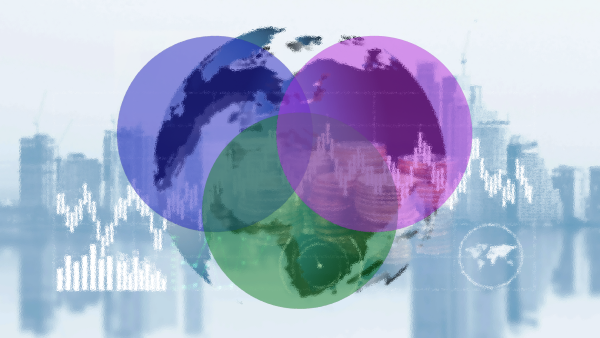One of the perks of the coronavirus is that it highlighted the numerous shortcomings of the current global economic system, ones that have been around for very long, yet we couldn't spot until this recent global shock.
Greetings!
— Global Youth, LSR (@GYI_LSR16) October 29, 2020
The purple economy is that part of the economy which contributes to sustainable development by promoting the cultural potential of goods and services.
Global Youth, LSR Chapter presents its latest post on Purple Economy. pic.twitter.com/b64nSVJCBh
In an attempt to talk about the different economic challenges the world is facing today, it is important that we learn about a theory that states seven different colors of the economy.
According to this argument, the economy can be white, black, grey, brown, blue, green, and/or purple.
While the white economy refers to the health industry as a whole, whether we are talking about doctors, hospitals, nurses, medical workers, or those who produce medical supplements and types of equipment, the black economy is often used in reference to illegal or unauthorized trade activities, such as smuggling or selling drugs, or any product that is prohibited by laws in a given country.
The grey economy is also known as the informal or underground economy, which refers to trade activities that are legal per laws but are not often registered in order to evade taxes. This is a particularly popular activity in developing countries, such as street vendors and unregistered factory workers.
These campaigners want to unlock the 'purple economy'.
— Sky News (@SkyNews) November 14, 2018
Physical barriers and staff attitudes make it harder for disabled people to spend their money. #PurpleTuesday
Have you heard of 'purple Tuesday'? https://t.co/3TaEgy3rx9 pic.twitter.com/rWpWTczXKp
Based on colors from nature, the green economy, which is probably the most known type, refers to sustainable and environment-friendly economic activities, such as agriculture, clean technology, and renewable energy. Similarly, the blue economy refers to activities related to water resources, like marine biotechnology, fisheries, and aquaculture. However, the brown economy is the opposite, where activities are solely based on fossil fuel resources, ones that have been proven to harm the environment in the long run.
Finally, the purple economy refers to care activities and services, such as education, healthcare, women empowerment, supporting the disabled and the elderly, communication, and others.
Now that we prepare to emerge from the most violent economic shock of our times, experts warn that policymakers and strategic planners need to take three of these colors into careful consideration; green, blue, and purple.
At a time when different countries are forging a way forward to recover from the effects of Covid-19, the green economy transition will become a significant driver of shared recovery across the globe.This will not be an individualistic benefit but a global benefit. #greeneconomy pic.twitter.com/J61EoEbCm6
— Centre for Green Economy (@afrigreen_) March 13, 2021
While the world has been quite aware of the importance of the green and blue economies, especially over the course of the last several decades, thanks to climate change and the aggravating scarcity of resources, very few voices have been weighing in the significance of the purple economy.
Due to its connection to various sectors, as it serves to support and highlight the importance of the human capital of each industry, which is often neglected by business people and policymakers.
The purple economy can actually help to balance the different sides of the economy, including the ones that have endured the greatest suffering in the wake of the COVID19 pandemic, so the world can show a higher sense of resilience in the face of potential disasters feared in the future.
In order to support the purple economy, policymakers, as well as investors, need to pay more attention to projects that help to alleviate the quality of life for individuals, in addition to ensuring better working conditions, better pay, and a higher standard of gender equality.
How else can governments and business stakeholders contribute to the purple economy? Which color should lead global priority efforts in the coming years?







